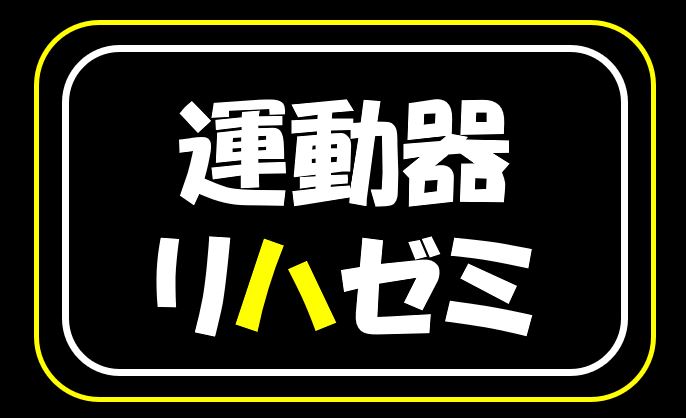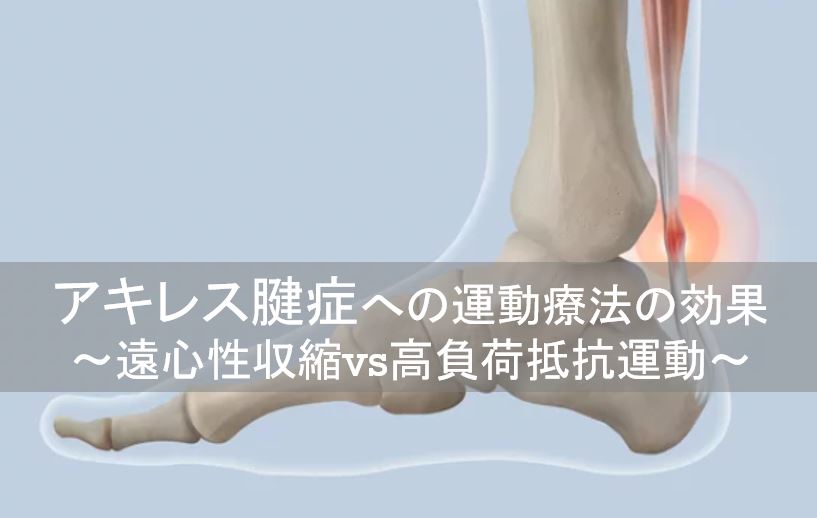こんにちは!
運動器専門のリハビリスタッフです!!
いつもお世話になります。
今回は、『アキレス腱症への運動療法の効果~遠心性収縮vs高負荷抵抗運動~』について解説させていただきます。
アキレス腱は人体の中で最大の腱ではありますが、アキレス腱症は非常に発生頻度の高いスポーツ外傷として報告されています。
治療法に関しては手術療法、保存療法ともに成績良好と言われています。
アキレス腱症はプロスポーツ選手から、一般のレクリエーションスポーツレベルの方まで生じる外傷であります。
『足底腱膜炎にはアキレス腱ストレッチが有効?~heel cord理論~』
そんな中、2015年に、アキレス腱症に対して下腿三頭筋への高負荷の抵抗運動と遠心性収縮のどちらが効果的かを検証した論文が海外で報告されております。
この論文の検証結果がとても気になるところです。
◆論文紹介
Randomized Controlled Trial
Am J Sports Med (IF: 6.2; Q1)
. 2015 Jul;43(7):1704-11.
doi: 10.1177/0363546515584760. Epub 2015 May 27.
Heavy Slow Resistance Versus Eccentric Training as Treatment for Achilles Tendinopathy: A Randomized Controlled Trial
アキレス腱症の治療としての重いスローレジスタンスとエキセントリックトレーニングの比較: 無作為化対照試験
Rikke Beyer 1, Mads Kongsgaard 2, Birgitte Hougs Kjær 3, Tommy Øhlenschlæger 2, Michael Kjær 2, S Peter Magnusson 4
Affiliations expand
- PMID: 26018970 DOI: 10.1177/0363546515584760
Abstract
Background: Previous studies have shown that eccentric training has a positive effect on Achilles tendinopathy, but few randomized controlled trials have compared it with other loading-based treatment regimens.
要旨
背景 これまでの研究で、エキセントリックトレーニングがアキレス腱症に良い影響を与えることが示されているが、他の負荷による治療レジメンと比較したランダム化比較試験はほとんどない。
Purpose: To evaluate the effectiveness of eccentric training (ECC) and heavy slow resistance training (HSR) among patients with midportion Achilles tendinopathy.
目的】アキレス腱症患者を対象に、エキセントリックトレーニング(ECC)とheavy slow resistance training(HSR)の有効性を評価すること。
Study design: Randomized controlled trial; Level of evidence, 1.
研究デザイン 無作為化比較試験;エビデンスレベル、1。
Methods: A total of 58 patients with chronic (>3 months) midportion Achilles tendinopathy were randomized to ECC or HSR for 12 weeks. Function and symptoms (Victorian Institute of Sports Assessment-Achilles), tendon pain during activity (visual analog scale), tendon swelling, tendon neovascularization, and treatment satisfaction were assessed at 0 and 12 weeks and at the 52-week follow-up. Analyses were performed on an intention-to-treat basis.
方法 慢性(3ヵ月以上)アキレス腱症の患者計58名を、12週間エキセントリックトレーニング(ECC)またはheavy slow resistance training(HSR)に無作為に割り付けた。機能と症状(Victorian Institute of Sports Assessment-Achilles)、活動時の腱の痛み(visual analog scale)、腱の腫れ、腱新生血管、治療満足度を0週と12週、52週のフォローアップで評価した。解析はintention-to-treatで行った。
Results: Both groups showed significant (P < .0001) improvements in Victorian Institute of Sports Assessment-Achilles and visual analog scale from 0 to 12 weeks, and these improvements were maintained at the 52-week follow-up. Concomitant with the clinical improvement, there was a significant reduction in tendon thickness and neovascularization. None of these robust clinical and structural improvements differed between the ECC and HSR groups. However, patient satisfaction tended to be greater after 12 weeks with HSR (100%) than with ECC (80%; P = .052) but not after 52 weeks (HSR, 96%; ECC, 76%; P = .10), and the mean training session compliance rate was 78% in the ECC group and 92% in the HSR group, with a significant difference between groups (P < .005).
結果は以下の通り。両群とも、機能と症状(Victorian Institute of Sports Assessment-Achilles) および Visual analog scale(VAS) において、0週から12週まで有意な(P < .0001)改善を示し、これらの改善は52週のフォローアップにおいても維持されていた。臨床的な改善と同時に、腱の厚みと新生血管の有意な減少がみられた。これらの強固な臨床的および構造的改善は、エキセントリックトレーニング(ECC)群とheavy slow resistance training(HSR)群の間で差はなかった。しかし、患者の満足度は、12週間後にheavy slow resistance training(HSR)(100%)がエキセントリックトレーニング(ECC)(80%)より高い傾向があったが、52週間後にはそうではなかった(HSR、96%;ECC、76%;P = .10)。平均トレーニングセッション遵守率は、エキセントリックトレーニング(ECC)群78%、heavy slow resistance training(HSR)群92%と、群間で有意差があった(P < 0.005)。
◆論文の結論
Conclusion: The results of this study show that both traditional ECC and HSR yield positive, equally good, lasting clinical results in patients with Achilles tendinopathy and that the latter tends to be associated with greater patient satisfaction after 12 weeks but not after 52 weeks.
結論 本研究の結果から、従来のエキセントリックトレーニング(ECC)とheavy slow resistance training(HSR)は、アキレス腱障害患者において、どちらも同様に良好で持続的な臨床的肯定的結果をもたらし、後者は12週間後の患者満足度が高い傾向があるが、52週間後にはそうではないことが示された。
◆まとめ
上記論文では慢性アキレス腱症の患者58名に対してエキセントリックトレーニング(ECC)群とheavy slow resistance training(HSR)群の2群に分けて12週間の治療効果を検討しております。
治療0週、12週、52週時にVictorian Institute of Sports Assessment-Achillesという機能評価、痛み(VAS)、腱の腫れ、腱の新生血管、治療満足度を評価しております。
結果としては、両群ともに0週から12週、52週ともに機能、痛みは有意に改善し、腱の厚み、新生血管は有意に減少しております。
しかしながら、エキセントリックトレーニング(ECC)群とheavy slow resistance training(HSR)群の2群間においては有意な差はなかったとのことです。
また、患者満足度は12週後においてはheavy slow resistance training(HSR)がわずかに高い傾向にあるようです。
上記論文の結果から考えると、アキレス腱に対しては高負荷の抵抗運動でも遠心性収縮でも効果は特に変わらないとのことですので、対象者の好みや状態に合わせてトレーニングを選択しても良いのかと思われます。
今回は、『アキレス腱症への運動療法の効果~遠心性収縮VS高負荷抵抗運動~』について解説させていただきました。



